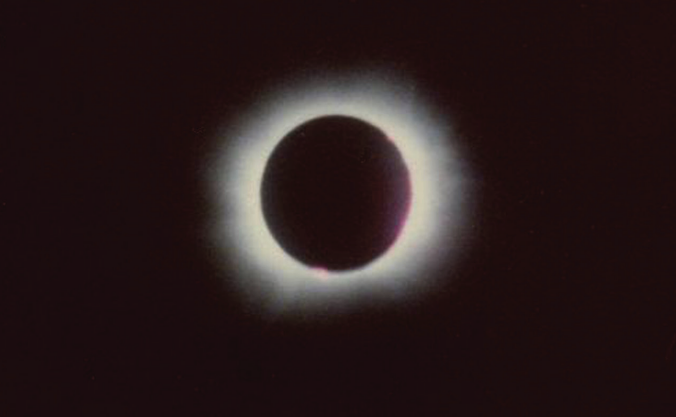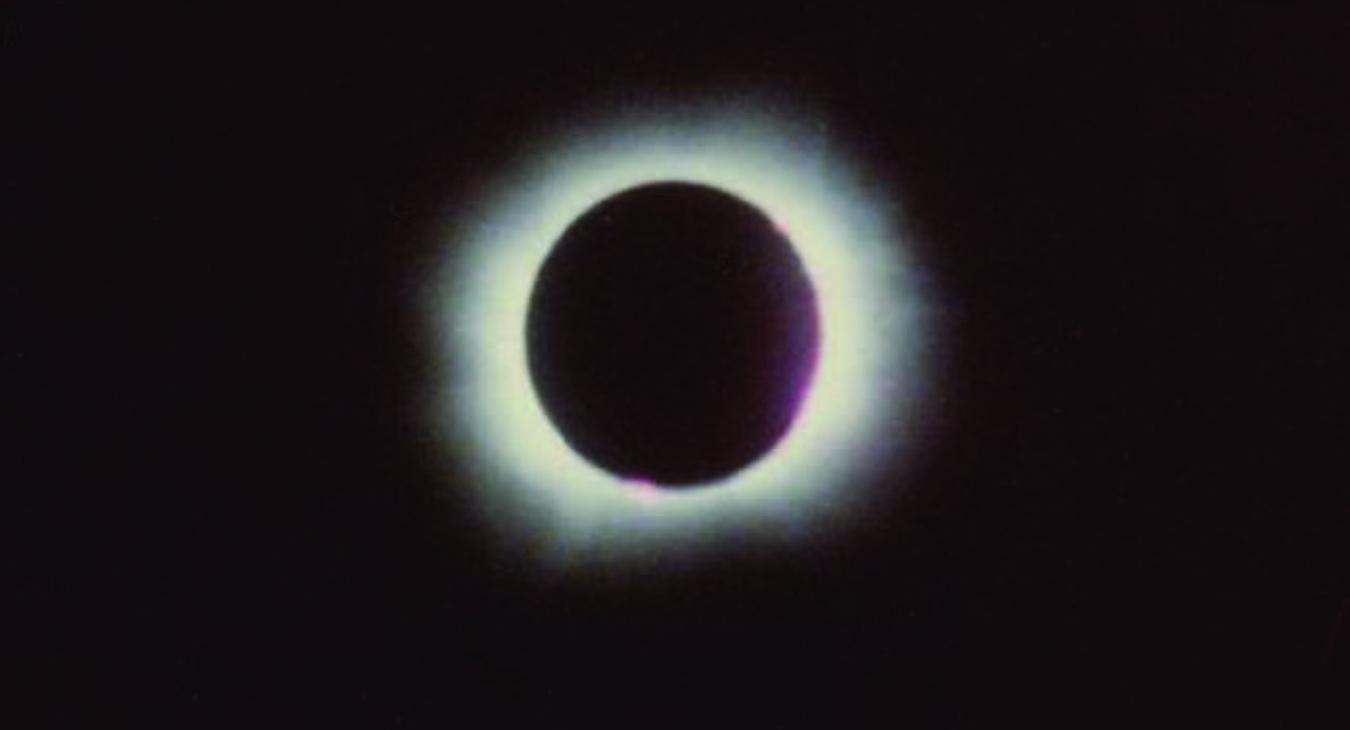Total eclipse of the sun on February 26, 1979, from Southern Manitoba, Canada. The sun’s extensive outer atmosphere—or corona—is visible, along with a couple of prominences—large loops of ionized gas. PHOTO BY ALAN HALE
The top celestial event during April will be the solar eclipse on Monday, April 8. The eclipse will be total—the moon will completely block the sun—along a path that crosses north-central Mexico and central Texas, then continues across the midwestern and northeastern U.S. and far southeastern Canada.
From Texas, totality will last for somewhat over four minutes, with this duration gradually shrinking as the path extends toward the Northeast. This is the first total solar eclipse to cross the continental U.S. since August 2017 and the last one for more than two decades. The next is expected in August 2044. From New Mexico, the eclipse will be a deep partial eclipse, with roughly 80% of the sun covered by the moon (a bit more as one gets closer to the path of totality, and somewhat less as one is farther from it). Mid-eclipse will occur around 12:30 p.m.
As always, care should be exercised when examining the sun. Jupiter, our solar system’s largest world, has been a prominent sight in our evening sky for the past several months, but that comes to an end in April. At the beginning of the month, the planet is still visible in the western sky as darkness falls and sets about an hour and a half after the end of dusk, but by month’s end it sets well before the end of twilight. For what it’s worth, on Saturday, April 20, the distant world Uranus will be located close to Jupiter, an event that may be detectable with binoculars. In the morning sky, Mars and Saturn continue their slow respective climbs out of the dawn.
The two worlds pass relatively close to each other on Wednesday, April 10, and rise around the beginning of twilight by month’s end. On the mornings of the 5th and 6th, the crescent moon will add to the overall show. Meanwhile, our two inner worlds—Venus and Mercury—are very low in twilight and pass close to each other on the 19th, but are buried so deeply in the dawn that the event will be difficult to see. One additional sky sight during April will be Comet PonsBrooks.
During the first half of the month, the comet should be visible low in the western sky after dusk as it travels through the constellations of Aries and Taurus. From favorable locations it should be dimly detectable with the unaided eye. Pons-Brooks will be above the horizon during totality during the eclipse on the 8th but will probably not be detectable without special equipment.


